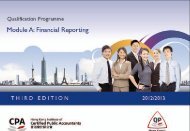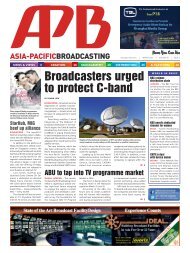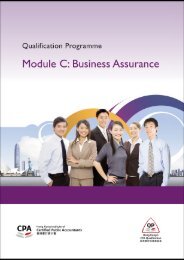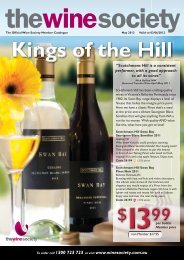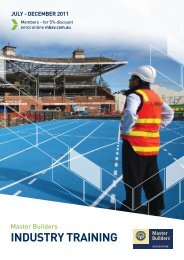INSTRUCTIONS - Realview
INSTRUCTIONS - Realview
INSTRUCTIONS - Realview
- No tags were found...
You also want an ePaper? Increase the reach of your titles
YUMPU automatically turns print PDFs into web optimized ePapers that Google loves.
NOTES TO THEFINANCIAL STATEMENTSFor the year ended 30 June 2009Note 1 Summary of significant accountingpolicies cont.(r) Compound financial instrumentsCompound financial instruments issued by the Groupcomprise convertible notes that can be converted to sharecapital at the option of the holder, and the number ofshares to be issued does not vary with changes in the fairvalue of the notes.The liability component of a compound financial instrumentis recognised initially at the fair value of a similar liabilitythat does not have an equity conversion option. The equitycomponent is recognised initially at the difference betweenthe fair value of the compound financial instrument as awhole and the fair value of the liability component. Anydirectly attributable transaction costs are allocated to theliability and equity components in proportion to their initialcarrying amounts.Subsequent to initial recognition, the liability component ofa compound financial instrument is measured at amortisedcost using the effective interest method, unless it is designatedat fair value through profit and loss. The equity componentof a compound financial instrument is not remeasuredsubsequent to initial recognition.(s) Fair value estimationThe fair value of financial assets and financial liabilitiesmust be estimated for recognition and measurement,or for disclosure purposes.The fair value of financial instruments traded in active markets(such as publicly traded derivatives, and trading and availablefor-salesecurities) is based on quoted market prices at thebalance sheet date. The quoted market price used forfinancial assets held by the Group is the current bid price;the appropriate quoted market price for financial liabilitiesis the current ask price.The fair value of financial instruments that are not traded inan active market (for example, over the counter derivatives)is determined using generally accepted valuation techniques.The Group uses a variety of methods and makes assumptionsthat are based on market conditions existing at eachbalance date.The nominal value less estimated credit adjustments oftrade receivables and payables are assumed to approximatetheir fair values. The fair value of financial liabilities fordisclosure purposes is estimated by discounting the futurecontractual cash flows at the current market interest ratethat is available to the Group for similar financial instruments.(t) Property, plant and equipmentBuildings, plant and equipment are stated at historical costless accumulated depreciation. Historical cost includesexpenditure that is directly attributable to the acquisitionof the items. Cost may also include transfers from equity ofany gains/losses on qualifying cash flow hedges of foreigncurrency purchases of property, plant and equipment.Subsequent costs are included in the asset’s carrying amountor recognised as a separate asset, as appropriate, only whenit is probable that future economic benefits associated withthe item will flow to the Group and the cost of the itemcan be measured reliably. All other repairs and maintenanceare charged to the income statement during the financialperiod in which they are incurred.Depreciation of assets is calculated using the straight linemethod to allocate the cost or revalue amounts, net of residualvalues, over their estimated useful lives, as follows:– Buildings 10 years– Plant and equipment 3 – 10 years– Fixtures and fittings 10 – 15 yearsWhere the carrying value of an asset is less than itsestimated residual value, no depreciation is charged. Theassets’ residual values and useful lives are reviewed, andadjusted if appropriate, at each balance sheet date.An asset’s carrying amount is written down immediatelyto its recoverable amount, if the asset’s carrying amount isgreater than its estimated recoverable amount (Note 1(k)).Gains and losses on disposal are determined by comparingproceeds with carrying amount. These gains and losses areincluded in the income statement when realised.(u) Trade and other payablesThese amounts represent liabilities for goods and servicesprovided to the Group prior to the end of the financial year,which remains unpaid as at reporting date. The amountsare unsecured and are usually paid within 30 days fromthe end of the month of recognition.(v) BorrowingsBorrowings, including the liability component of theGroup’s convertible debt, are initially recognised at fairvalue, net of transaction costs incurred. Borrowings aresubsequently measured at amortised cost. Any differencebetween the proceeds (net of transaction costs) and theredemption amount is recognised in the income statementover the period of the borrowings using the effective interestmethod. Fees paid on the establishment of loan facilities,which are not incremental costs relating to the actual drawdown of the facility, are recognised as prepayments andamortised on a straight line basis over the term of the facility.The fair value of the liability portion of convertible debt isdetermined using a market interest rate for an equivalentnonconvertible debt. This amount is recorded as a liabilityon an amortised cost basis until extinguished on conversionor maturity of the debt. The remainder of the proceeds isallocated to the conversion option. This is recognised andincluded in shareholders’ equity, net of income tax effects.56



